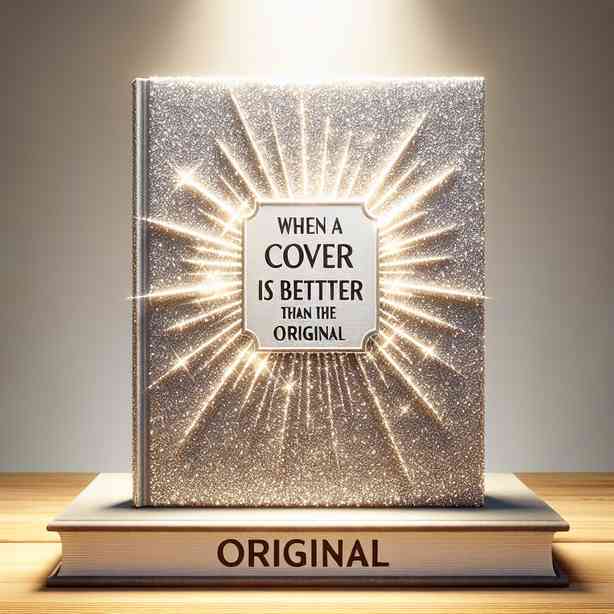
In the world of music, there exists a fascinating phenomenon: covers can sometimes surpass the original versions of songs. This intriguing concept raises numerous questions about creativity, interpretation, and the emotional resonance of music. By exploring the reasons why certain covers are seen as superior to their originals, we can gain a deeper understanding of artistic expression and the transformative power of music.
One of the fundamental reasons a cover may be better than the original is the emotional connection established by the artist. When a singer or musician takes a song and infuses it with their unique feelings and experiences, it can create a powerful reimagining that resonates more deeply with listeners. For instance, when Johnny Cash covered Nine Inch Nails’ “Hurt,” he brought a level of vulnerability and rawness that transcended the original. His age and life experiences added a poignant depth to the lyrics, often making listeners feel the weight of regret and sorrow even more intensely than the original version.
Covers can also shine a light on different interpretations of a song’s themes. Various artists may take creative liberties, adjusting melodies, harmonies, and arrangements to present the song in a fresh light. A great example of this is Whitney Houston’s rendition of “I Will Always Love You,” originally by Dolly Parton. Houston’s powerful vocals and the lush orchestration turned a heartfelt ballad into a timeless anthem, appealing to a broader audience and encapsulating emotions in a way that found resonance across generations.
Another aspect to consider is the context in which a cover is released. Sometimes, a cover is performed in a significant cultural moment, prompting listeners to reassess the message and implications of the song. For instance, during social movements, certain covers have been used to amplify messages of hope and resilience. A notable example is the cover of “Imagine” by John Lennon, which has been reinterpreted in various forms during times of social unrest or change. Each rendition can serve as a reminder of the ongoing relevance of the song’s message, allowing it to find new meaning in contemporary contexts.
Furthermore, production quality and technological advancements can play a role in enhancing a cover. Modern recording techniques, superior sound engineering, and advanced instrumentation can elevate a cover to new heights that might not have been achievable during the time the original was created. This modernization can breathe new life into older songs. For example, modern artists like Post Malone and Miley Cyrus have taken classic hits and infused them with contemporary vibes, making them accessible and appealing to today’s audiences.
The artist’s performance style can heavily influence the perception of the cover as well. An artist’s charisma, stage presence, and ability to convey genuine emotion can make their version of a song feel more authentic than the original. Consider how a live performance can differ vastly from a studio recording. An artist may add unexpected vocal runs or improvisational flourishes, creating a unique listening experience that feels more intimate and engaging.
Moreover, nostalgia can imbue a cover with special significance. When an artist covers a beloved song from an earlier era, it can evoke powerful memories and emotions associated with that time, creating a sense of connection between generations. For instance, when artists like Jack White cover classic rock songs, they often invoke nostalgia while introducing those songs to new audiences. This bridging of the past and present can enhance the emotional impact of the music and engender a shared experience among listeners, further solidifying the cover’s status as a standout version.
Artistic collaboration also plays an important role in enriching covers. When artists join forces, they can blend their styles and influences, resulting in a unique mashup that elevates the original song. Take, for example, the collaboration between Elton John and Dua Lipa on “Cold Heart.” The fusion of their distinct musical styles and the incorporation of elements from earlier Elton John songs created a fresh and exciting take that delighted both old and new fans alike.
Additionally, the accessibility of music through digital platforms allows listeners to discover and appreciate these covers more easily than ever before. With countless streaming services at our fingertips, audiences can explore a diverse array of interpretations, helping to democratize musical appreciation. The algorithm-driven recommendations can introduce listeners to covers they might not have encountered otherwise, hence expanding their musical horizons and leading to greater appreciation for various interpretations of beloved songs.
It is equally important to acknowledge that beauty is subjective, and not every cover will resonate with everyone. The interpretation of a song can evoke different emotions in different listeners, and what might be seen as an improvement by some could be seen as a deviation from the original’s essence by others. Music is deeply personal, and individuals may prefer the original for its historical significance or the emotional weight of the artist’s initial interpretation.
In conclusion, the phenomenon of covers surpassing originals originates from a labyrinth of factors including emotional resonance, contextual relevance, production quality, and interpretation. Covers like Whitney Houston’s “I Will Always Love You” or Johnny Cash’s “Hurt” illustrate how an artist’s unique perspective can transform a song, adding layers of meaning and making it relevant in contemporary times. While some may argue that nothing can ever surpass the original, it is essential to appreciate the transformative potential of covers and the new life they can breathe into familiar melodies. As we explore and celebrate music, we open ourselves up to the incredible diversity of human experience captured within it—a reminder that art is, indeed, continually evolving. Embracing this evolution enhances our appreciation for the creativity and expression that thrive in the world of music.


